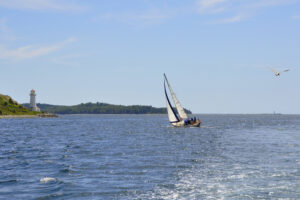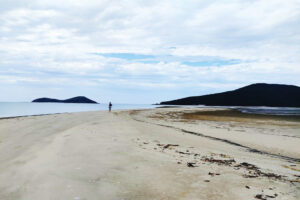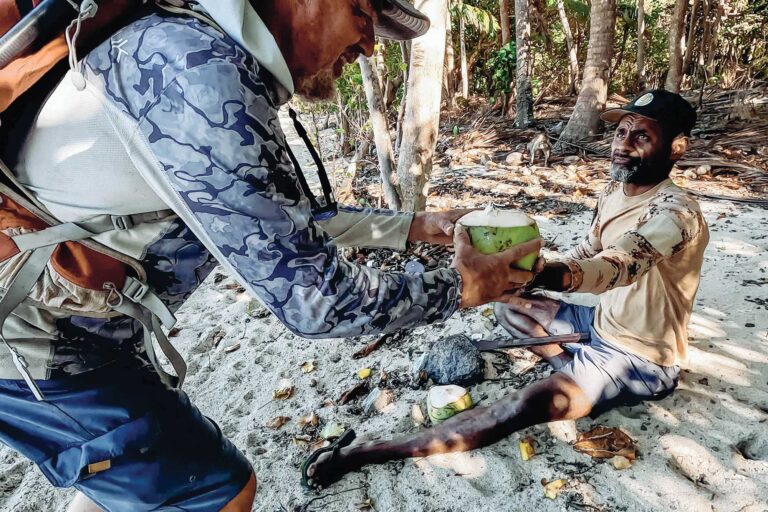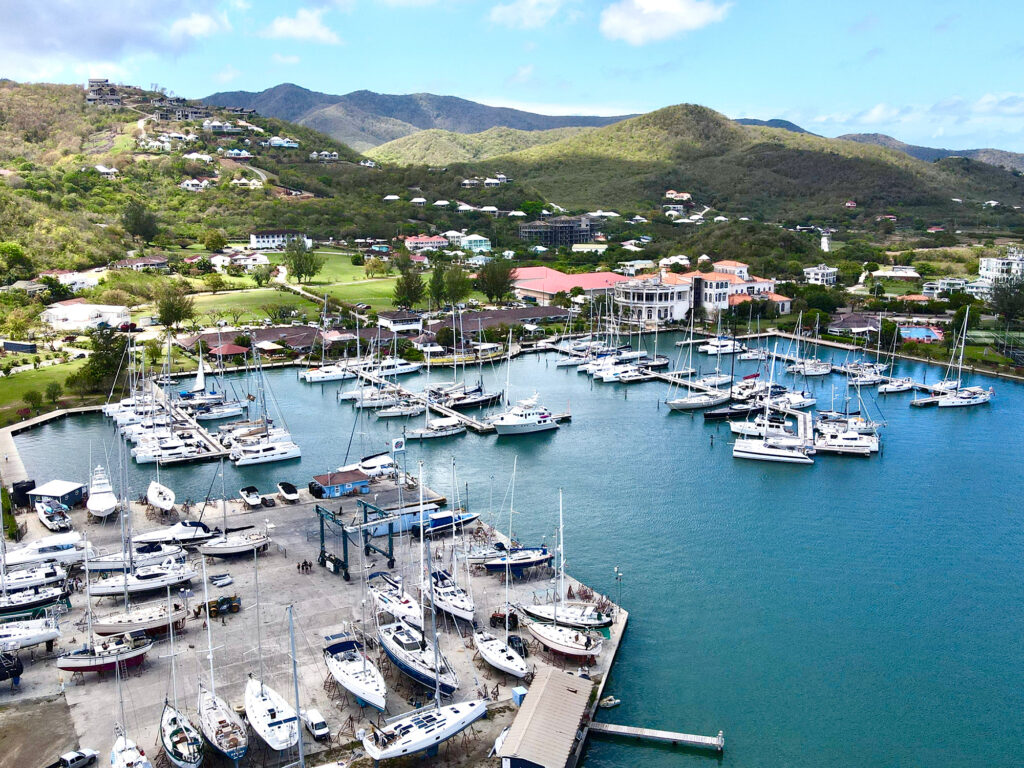
It’s May, the end of another season in the Caribbean.
Antigua Classic and Sailing Week have come and gone; the boats have packed up and left. My boat is one of the only ones still at anchor in this harbor.
So, what now?
I’ve got to decide what to do with it for the summer.
Do I haul the boat out here? Or scoot down to Trinidad and haul it out there? Or make the long voyage north, back to New England? My insurance company may have something to say about all of this. What’s it going to cost me?
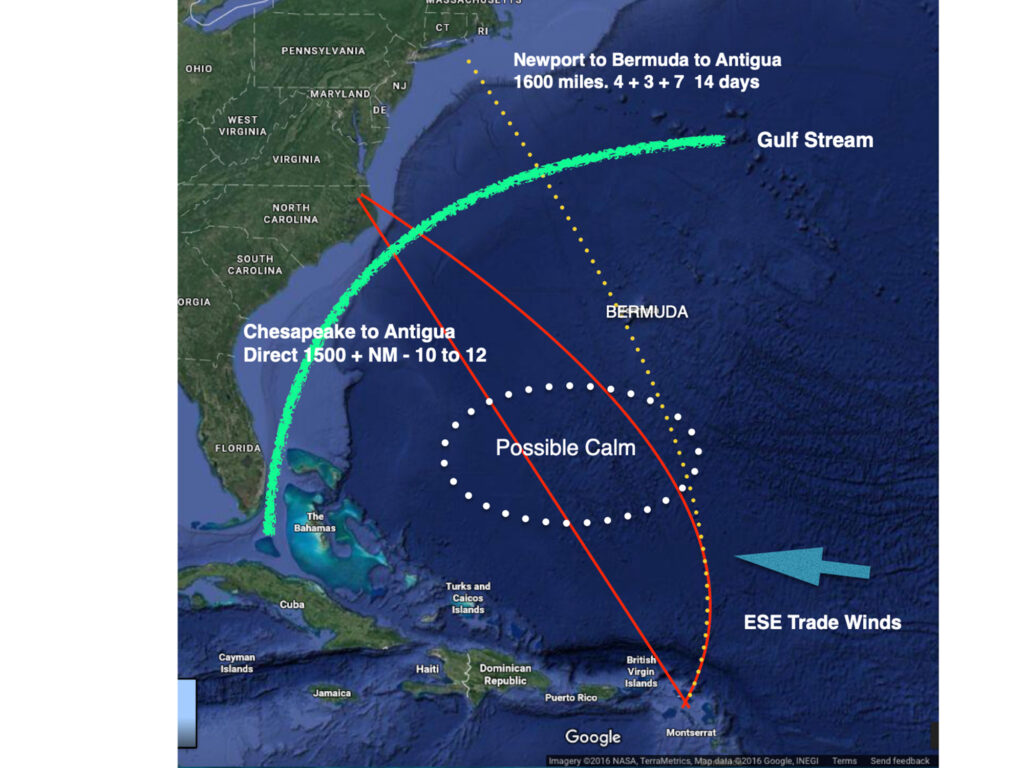
Haulout and storage for six months will cost at least $4,000. The trip back north is less than $1,000—and then I’ll have the boat with me all summer. If I stay aboard all summer in the islands, I save on hauling costs and can get work done on the boat, but there’s a risk: hurricanes.
Leaving the Boat in the Islands
I wouldn’t leave my boat in the water—on a mooring, at anchor, or tied to a slip in a Caribbean marina—for the summer, unattended. Not these days.
There was a time when I did. Back in the 1980s, Afaran, my Lord Nelson 41, spent five summers on her mooring in Great Cruz Bay, St. John, U.S. Virgin Islands.
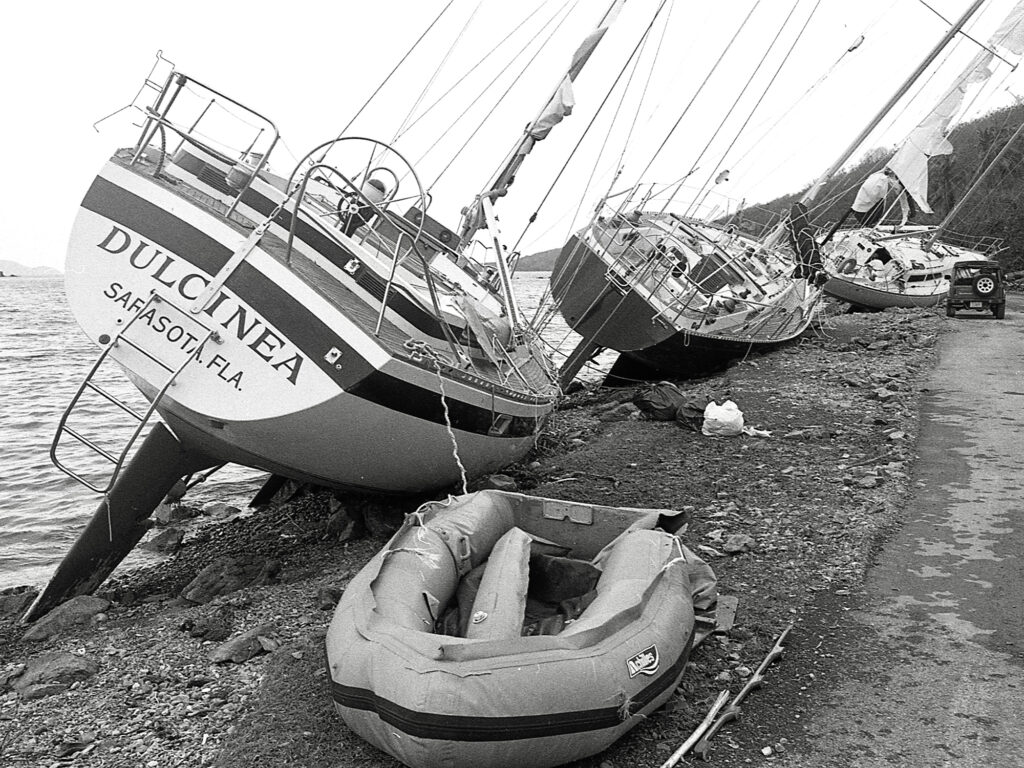
When Hurricane Hugo took aim at the USVI in early September 1989, I flew down and moved the boat to Coral Bay. There, Afaran and I rode out 150-knot winds on two anchors. We survived—but 50 other boats around us didn’t. (That story was published in Cruising World last November.)
Six years later, in 1995, Afaran and I rode out Hurricane Luis on three anchors in Maho Bay, St. John. After that blow, I put her back on her mooring and flew home to Maine. Two weeks later, Hurricane Marilyn came roaring through the Virgin Islands as a Category 4. I was not aboard, and Afaran was a total loss. The only parts found were the mast, engine, and pieces of hull and deck—none larger than a refrigerator door.
Had I been aboard, I wouldn’t have stayed in Great Cruz Bay; I’d have moved the boat to a safer anchorage.
My next boat, Searcher, a Bowman 57 ketch, I owned and sailed for 14 years. But I made sure she was in Maine each summer.
That was 30 years ago. Since then, hurricanes have become more frequent and more intense. Insurance has gotten harder to find and more expensive.
My pal Larry, who has been chartering his 54-foot private yacht, The Dove, in the Caribbean for over 30 years, hauls out in Trinidad or sails to Maine and the Canadian Maritimes for the summer.
I need to do some serious thinking about the options.
Staying Aboard for the Summer
If I elected to remain aboard for the summer, I’d save the cost of a haulout. Risky, yes—but many cruisers do stay aboard all summer.
If I did, I’d be reading Don Street’s books and website for advice. Don, the guru of Caribbean sailing, passed away last year at age 92, but his guidance remains rock solid.
“With today’s more accurate forecasts, it’s safe to predict the tracks of hurricanes a few days ahead of their arrival. Two days are all a capable yacht needs to get out of the way. Two days put you 300 nautical miles north or south of the track. Forget about hurricane holes. There are none left,” he wrote.
Want more of Don’s sage advice? Visit street-iolaire.com.
Where to Summer Over
Where would I spend the summer while aboard, waiting for hurricane season to end?
St. Anne, Martinique, is a solid option. This charming village has a wide-open anchorage and sits in the middle of the island chain. From here, it’s 250 nautical miles to Sint Maarten, 350 to the BVIs, or 250 south to Trinidad.
A second option: anchor in one of the southern coves on Grenada. It’s just 36 hours—an overnight sail—to Trinidad if a hurricane threatens.
St. Anne is also near Le Marin, a major yachting center.
Preparing for a Summer in the Islands
Shade. If I’m staying aboard, I need shade! A full boat awning, from the mast aft to the stern—in white Sunbrella, please. Dark material transmits heat below; white reflects it. Even dirty white will do.
Bow deck awning? Yes, that too. And get the awnings fitted as rain catchers, with a hose leading to the deck water tank fitting.
Hauling Out in the Islands?
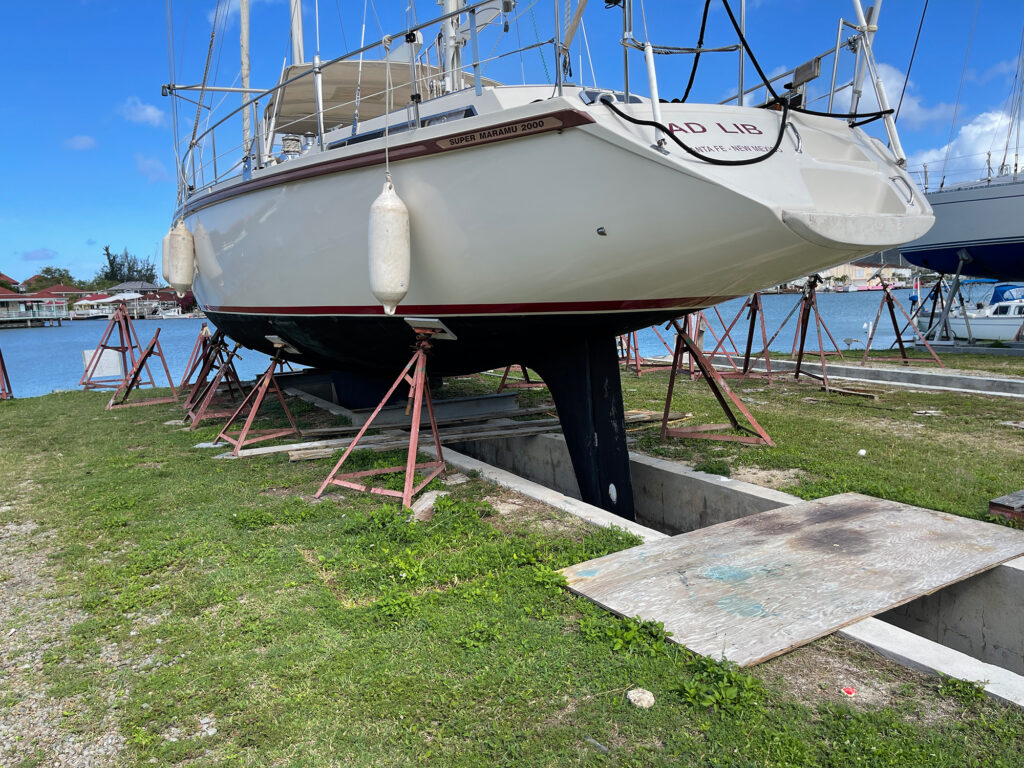
If you’re planning to haul your boat in the islands this summer, where?
I was going to write a full section on this, but Lexi Fisher, the new editor-in-chief of Chris Doyle’s Cruising Guide, beat me to it. Her detailed survey of islands, yards, and procedures appeared in the April edition of Caribbean Compass.
Here’s the link: caribbeancompass.com/hauling-out
Insurance
Dig out your insurance policy and read it. What are the geographic limits for hurricane season? What’s required if you haul out in the tropics?
Must the mast be removed? Is the keel buried in a pit? Are the jack stands welded? Is the boat tied down to ground anchors?
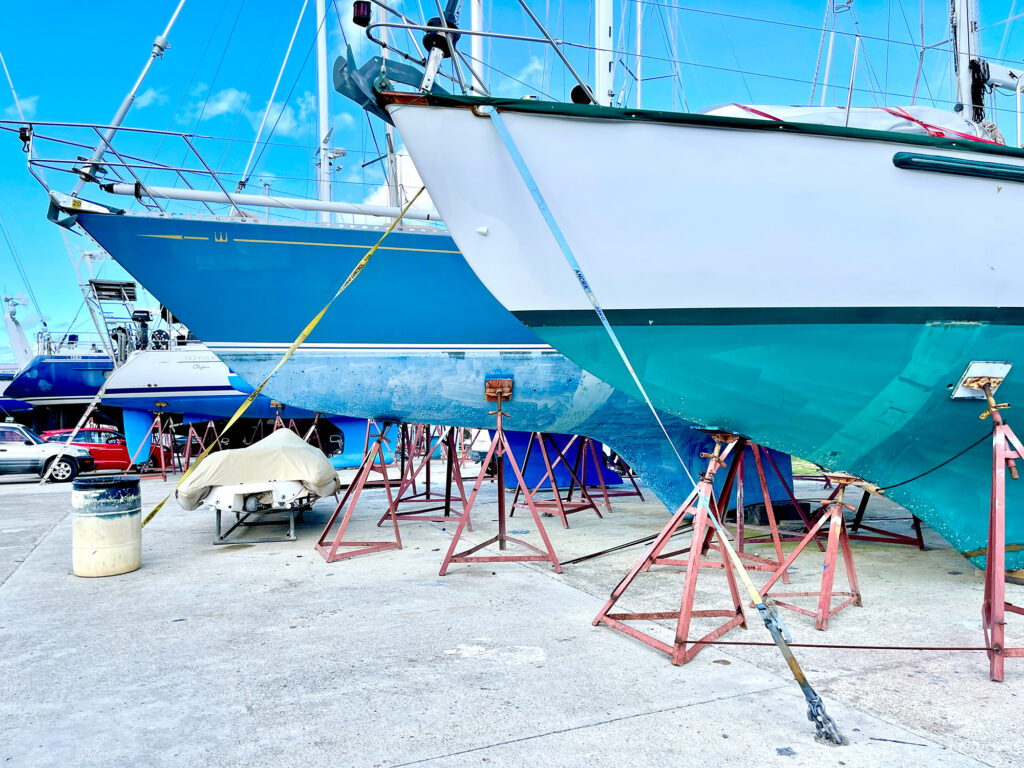
Do they want to see your written Named Storm Plan?
If so, call your agent and ask what the company requires. Do it now—months before a storm threatens. It’s a worthwhile piece of housework.
Sailing Back North
Another offshore voyage? Why not? You got the boat down here—just sail it back.
The spring passage north is far more enjoyable than a fall delivery. Gone are the cold fronts, the gales, the chill.
Fuel up, fill the tanks, and provision for a three-week voyage. A crew of three or four will do—or go it alone.
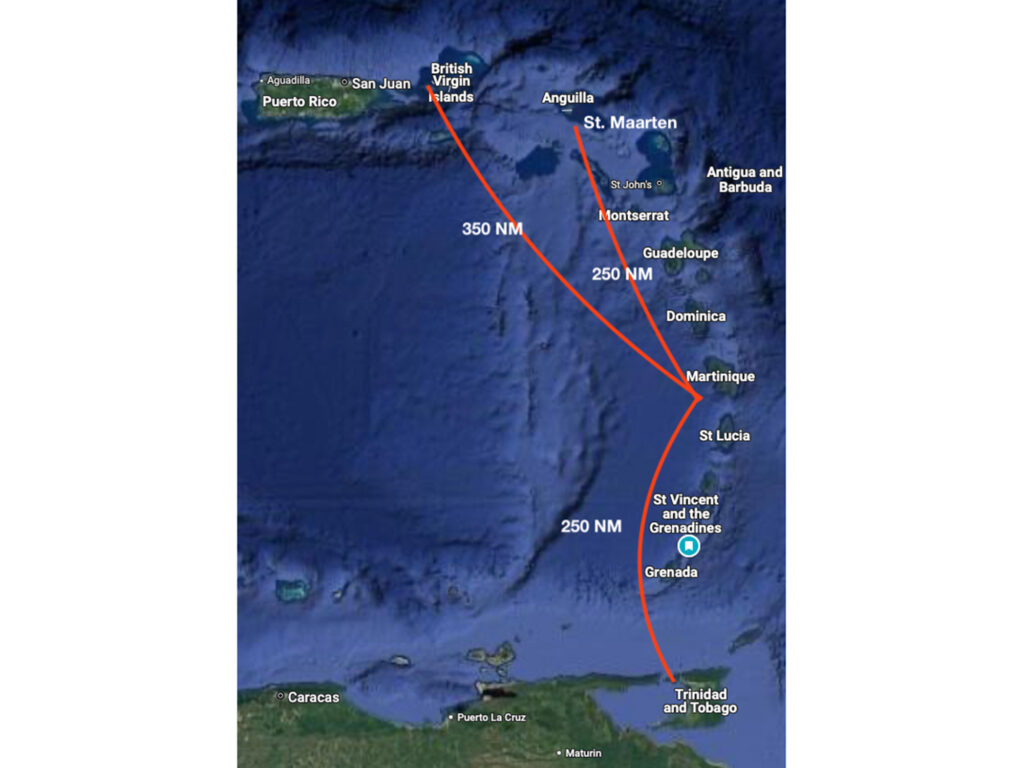
It’s about 900 nautical miles from Sint Maarten or the BVIs to Bermuda—five to seven days underway. It costs nothing to anchor on arrival, and a transit permit is just a few bucks. Rest, fix things, refuel, reprovision—then wait for a weather window to cross the Gulf Stream.
From Bermuda to Newport or Cape Henry at the mouth of the Chesapeake, it’s less than 700 miles—four to six days.
To Wrap Up
Whatever you do, you’ve only got a few weeks to get the boat secured somewhere—or get out of town and above Cape Hatteras.
Good luck.


